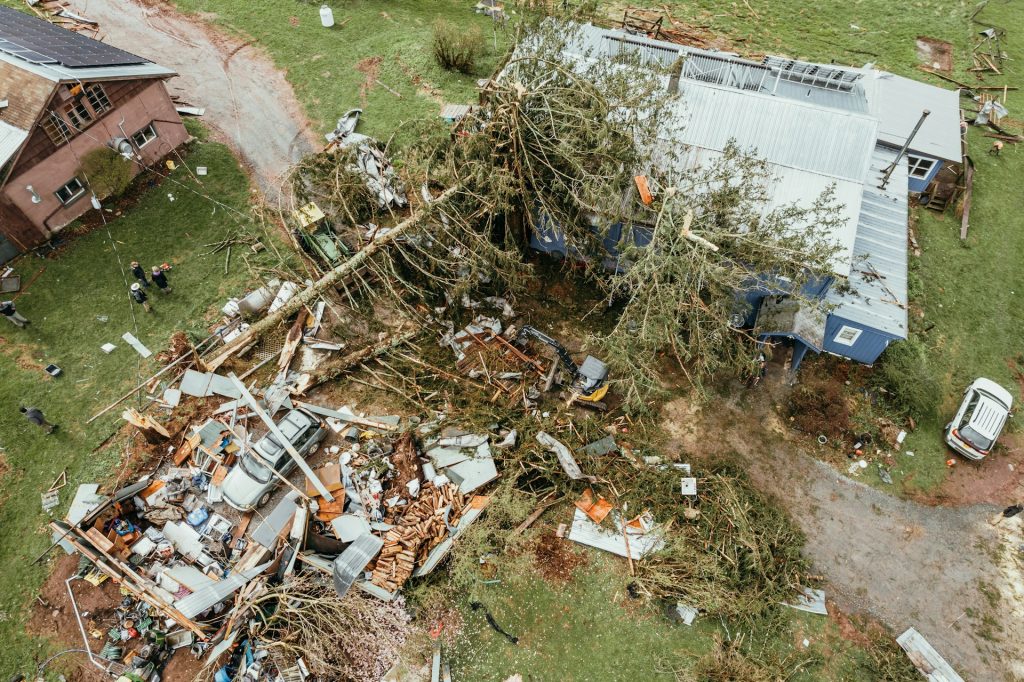How Severe Storms Are Exacerbating the Global Housing Shortage
By: Evelyn Long
As climate change increases the frequency and intensity of severe storms, the global housing shortage worsens, leaving millions vulnerable.
Recent hurricanes and other extreme weather events have devastated homes, further straining the availability of safe, affordable housing. Beyond just physical damage, these storms exacerbate homelessness and expose systemic weaknesses in housing infrastructure.
Storm Damage: A Growing Crisis
In 2023, Hurricane Idalia ravaged parts of Florida and the southeastern United States, causing widespread damage to homes and leaving thousands displaced. With winds topping 125 miles per hour, the storm caused at least $12 billion in damage.
Similarly, in the Caribbean, Hurricane Fiona destroyed homes and critical infrastructure in 2022, leaving 800,000 people in Puerto Rico without water and power for days.
Globally, extreme storms like 2021’s Super Typhoon Rai in the Philippines further reveal the scale of destruction. Over 36 million homes were damaged or destroyed, leaving a population already struggling with housing shortages to face even greater insecurity.
Storms Intensifying Homelessness and Housing Insecurity
Severe storms displace millions every year. In 2023 alone, 19.8 million people were displaced due to weather-related disasters. Some of these people never regain stable housing, slipping into long-term homelessness or precarious living situations.
Temporary shelters and overcrowded conditions often lead to other safety concerns, such as the spread of disease, mental health deterioration and even violence. The aftermath of severe storms also often leads to unsafe living conditions, as people return to homes that may be structurally unsound because they have nowhere else to go. These unsafe homes pose a major threat during subsequent storms.
Further complicating recovery efforts, businesses and homes often face prolonged power outages and water damage, which can delay rebuilding efforts. Leftover flood water can even contain traces of bacteria and oil, making it unsafe to tread through. Essential recovery equipment — like generators, air movers and dehumidifiers — is often necessary to manage these issues quickly. Without access to such tools, mold and structural damage can spread, deepening the crisis for storm-affected areas.
The Role of Climate Change
Climate change is amplifying the severity of these storms. Rising sea levels, warmer oceans, and shifts in weather patterns contribute to more frequent and intense hurricanes, typhoons and floods.
The Intergovernmental Panel on Climate Change (IPCC) has found that the number of Category 4 and 5 storms has increased over the past 40 years and is projected to keep increasing. As storms intensify, housing stock is continually depleted faster than it can be rebuilt, deepening the global housing crisis.
Addressing the Climate and Housing Crisis
Solving this problem requires both short-term and long-term strategies:
Resilient Housing Construction
One immediate solution is the construction of storm-resistant housing. Stronger building codes that mandate homes to be built to withstand severe weather can reduce future destruction. Materials such as reinforced concrete and hurricane-proof windows can significantly improve homes’ resistance to extreme weather.
Another factor to consider is the type of roofing material used. For example, metal roofing is often praised for its durability and ability to withstand extreme weather conditions. Steel roofing, in particular, offers reflective solar properties and is much more resistant to wind and rain than traditional asphalt shingles, thereby making it an excellent option for homes in storm-prone areas.
Climate Adaptation Strategies
Urban planning and infrastructure improvements are essential on a larger scale. Flood mitigation systems, better drainage and strategically placing homes away from vulnerable areas can minimize storm impacts. Governments can also support buyout programs that encourage homeowners in high-risk areas to relocate before disasters strike.
Climate Action
Climate change is at the root of this issue, and without addressing it, the housing crisis will continue to worsen. Reducing carbon emissions, transitioning to renewable energy sources, and promoting global climate cooperation can help slow the frequency and intensity of storms. Investing in climate resilience can also help nations prepare for the storms that occur, mitigating damage and reducing displacement.
Building Resilience in a Storm-Stricken World
The global housing shortage is being exacerbated by severe storms, which are themselves intensified by climate change. As these storms destroy homes and displace millions, safety concerns arise, particularly for those left homeless or living in unsafe conditions.
A combination of resilient housing, improved infrastructure and climate action is needed to address both the immediate and long-term impacts of these storms on global housing.
About the Author:
Evelyn Long is a writer and editor focused on construction and sustainability. Her work can be found on Renovated, a web resource for better building and design.




